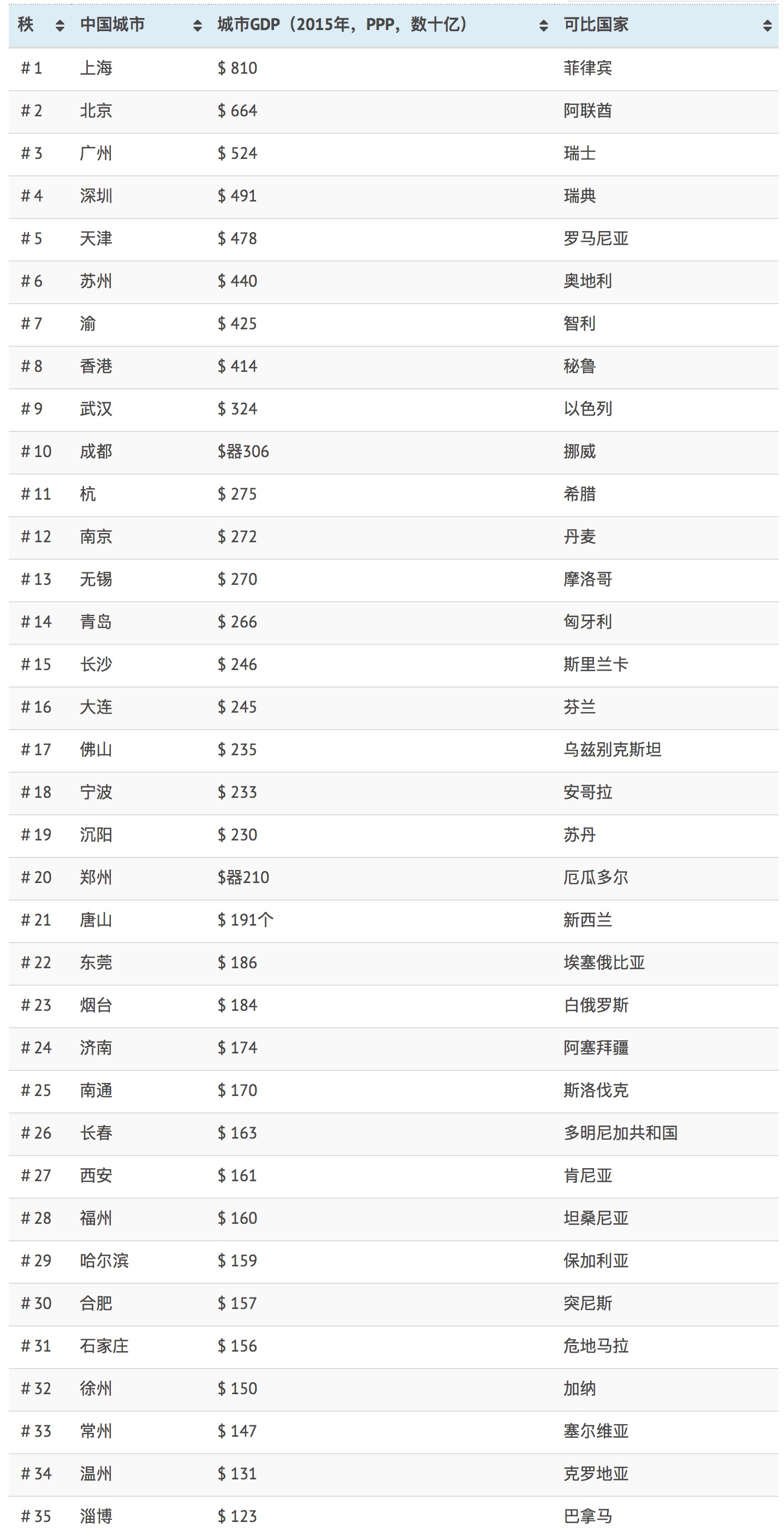最近,我看到一篇《2018年互联网趋势》的报告,报告中一张数据可视化图吸引了我,从展示和图片上的属性,我猜到这不是国内统计出的报告。
进入今天的正题。
这是统计中国35个城市的 GDP,这些经济体相当于一个国家。


在国外的经济学家或者数据工作者眼里,中国似乎总有一层神秘的面纱,该文中有这样一段话:
With 1.4 billion people and the third-largest geographical area, the country is a vast place to begin with. Add in explosive economic growth, a market-oriented but Communist government, a longstanding and complex cultural history, and self-inflicted demographic challenges– and understanding China can be even more of a puzzle.
译:
这个拥有14亿人口和第三大地理区域的国家是一个广阔的起点。再加上爆炸性的经济增长、一个以市场为导向的共产党政府、悠久而复杂的文化历史,以及自我造成的人口统计学挑战,理解中国可能会更加令人困惑
这篇文章中,排在第一的一个评论。

他们在研究中国的经济发展明确指出三个经济大区。
Yangtze River Delta
With a combined GDP of $2.17 trillion, which is comparable to Italy, the Yangtze River Delta contains cities like Shanghai, Suzhou, Hangzhou, Wuxi, Ningbo, and Changzhou.Pearl River Delta
With a combined GDP of $1.89 trillion, which is comparable to South Korea, the Pearl River Delta has cities like Hong Kong, Guangzhou, Shenzhen, Foshan, Dongguan, and Macao.Beijing-Tianjin
With a combined GDP of $1.14 trillion, which is comparable to Australia, this megaregion holds the two largest cities in northern China, Beijing and Tianjin. The two cities are a 30-minute bullet train ride apart.译:
长江三角洲
长江三角洲的GDP总和为2.17万亿美元,相当于意大利,包括上海、苏州、杭州、无锡、宁波和常州等城市。珠江三角洲
珠江三角洲的国内生产总值合1.89万亿美元,相当于韩国,拥有香港、广州、深圳、佛山、东莞、澳门等城市。北京-天津
这个大城市的GDP总和为1.14万亿美元,相当于澳大利亚的GDP。这两个城市相距30分钟的子弹头列车。
国内外文化差异非常明显,暂时忽略这个数据的准确性问题,可惜居民生活幸福指数很难量化,不然加上这个数据对比,报告似乎更据有现实意义。
